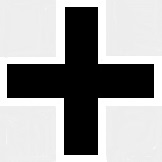Corgi AA38906 German Fokker D VII Fighter - 4649/18 "Seven Swabians", Wilhelm Scheutzel, Jasta 65, Marville, France, September 1918 (1:48 Scale)
"When you march into France, let the last man on the right brush the Channel with his sleeve."
- General Alfred von Schlieffen, referring to the Schlieffen Plan just prior to his death in 1913
 The Fokker D.VII was a German World War I fighter aircraft designed by Reinhold Platz of the Fokker-Flugzeugwerke. Germany produced around 1,700 D.VII aircraft in the summer and autumn of 1918. In service, the D.VII quickly proved itself superior to existing Allied fighters, leading to a second "Fokker Scourge." The Armistice ending the war specifically required Germany to surrender all D.VIIs to the Allies at the conclusion of hostilities; nevertheless, the aircraft saw continued widespread service with many other countries in the years after World War I.
The Fokker D.VII was a German World War I fighter aircraft designed by Reinhold Platz of the Fokker-Flugzeugwerke. Germany produced around 1,700 D.VII aircraft in the summer and autumn of 1918. In service, the D.VII quickly proved itself superior to existing Allied fighters, leading to a second "Fokker Scourge." The Armistice ending the war specifically required Germany to surrender all D.VIIs to the Allies at the conclusion of hostilities; nevertheless, the aircraft saw continued widespread service with many other countries in the years after World War I.
Fokker's chief designer, Reinhold Platz, had been working on a series of experimental planes, the V-series, since 1916. These planes were characterized by the use of cantilever wings, first developed during Fokker's government-mandated collaboration with Hugo Junkers. Junkers had originated the idea in 1915 with the first all-metal aircraft, the Junkers J 1, nicknamed Blechesel ("Sheet Metal Donkey" or "Tin Donkey"). The resulting thick-sectioned cantilever wing gave greater lift and more docile stalling behavior than conventional thin wings.
Late in 1917, Fokker built the experimental V.11 biplane, fitted with the standard Mercedes D.IIIa engine. In January 1918, Idflieg held a fighter competition at Adlershof. For the first time, front line pilots would directly participate in the evaluation and selection of new fighters. Fokker submitted the V.11 along with several other prototypes. Manfred von Richthofen flew the V.11 and found it tricky, unpleasant, and directionally unstable in a dive. In response to these complaints, Fokker's chief designer and engineer, Reinhold Platz, lengthened the rear fuselage by one structural bay, and added a triangular fixed vertical fin in front of the rudder. Upon flying the modified V.11, Richthofen praised it as the best aircraft of the competition. It offered excellent performance from the outdated Mercedes engine, yet it was safe and easy to fly. Richthofen's recommendation virtually decided the competition, but he was not alone in recommending it. Fokker immediately received a provisional order for 400 production aircraft, which were designated D.VII by Idflieg.
Fokker's factory was not up to the task of supplying the entire air force, so their rivals at Albatros and AEG were directed to build the D.VII under license, though AEG did not ultimately produce any aircraft. Because Fokker did not use production plans for their designs, they simply sent a completed D.VII airframe for Albatros to copy. Albatros paid Fokker a five percent royalty for every D.VII built under license. Albatros Flugzeugwerke and its subsidiary, Ostdeutsche Albatros Werke (OAW), built the D.VII at factories in Johannisthal (designated Fokker D.VII (Alb)) and Schneidemahl (Fokker D.VII (OAW)), respectively. Some parts were not interchangeable between aircraft produced at different factories, even between Albatros and OAW.
Albatros soon surpassed Fokker in the quantity and quality of aircraft produced. Despite the massive production program, under 2,000 D.VII aircraft were delivered from all three plants, with the most commonly quoted figure being 1,700.
The Austro-Hungarian company MAG (Ungarische Allgemeine Maschinenfabrik AG - Hungarian General Machine Company) commenced license production of the D.VII powered by Austro-Daimler engines late in 1918, production continuing after the end of the war, with as many as 50 aircraft completed.
Pictured here is a 1:48 scale replica of a German Fokker D VII fighter that was piloted by Wilhelm Scheutzel, who was attached to Jasta 65 then deployed to Marville, France, during September 1918.
Sold Out!
Dimensions:
Length: 6-inches
Wingspan: 7-1/2-inches
Release Date: December 2018
Historical Account: "Seven Swabians" - Although the air war had turned inexorably in favor of the Allies by the late summer of 1918, the Luftstreitkrafte were still able to introduce an aircraft which is generally considered to be the finest fighter of the Great War, the Fokker D.VII. German pilots had a saying that this new fighter could make a mediocre pilot good and a good pilot into an ace, but unfortunately this was to prove a case of too little, too late.
Fokker D.VII 4649/18 has to be considered one of the most flamboyantly decorated fighters of the Great War - adorning both sides of the aircraft's fuselage, an elaborate scene featuring the "Seven Swabians" from a famous Brothers Grimm German Fairy Tale must have made for an unusual sight. Brandishing an oversized spear which required all seven of the Swabians to carry, the story tells the farcical tale of this hapless group and their futile attempts to achieve greatness through performing great deeds.
Showing an incredible level of artistic talent, the artwork was slightly different on both sides of the aircraft, however, despite all this decorative effort, this particular fighter was to achieve no more than two aerial victories during its short service career.


